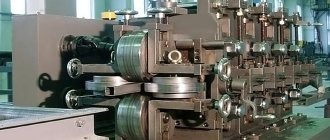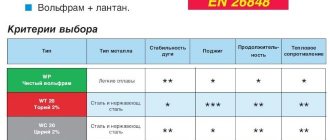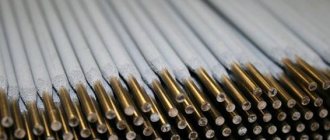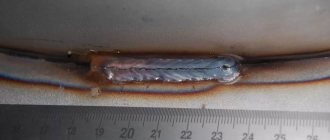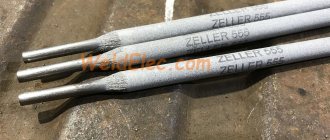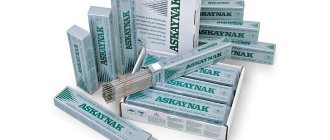22.08
2019
Carbon steels include a class of alloys in which carbon (C) as a chemical element is the main alloying component that determines the most important properties of the metal. Its share in the composition can be different, depending on it, groups of these steels are distinguished:
- low-carbon - the proportion of C in them is less than 0.25%;
- medium-carbon - with a carbon share from 0.25 to 0.6%;
- high-carbon - with a carbon share from 0.6% to 2.07%.
Also, the composition of such steels includes manganese and silicon in very small quantities - as useful alloying elements, and hydrogen and sulfur as harmful impurities.
Compound
The chemical composition and ratio of components in steel grade C255 are regulated by GOST 27772-88. According to it, the alloy contains:
- 0.22% carbon, the indicators of hardness and fragility depend on its quantity and uniformity of distribution in the structure;
- 0.65% manganese, GOST allows an increase in its mass fraction to 0.85%;
- from 0.15 to 0.30% silicon, it is necessary to improve the performance properties of the material;
- 0.3% copper and nickel each, a small amount of these elements does not have a noticeable effect on the properties;
- chromium – 0.3%, low content of the element indicates the metal’s susceptibility to corrosion under certain conditions;
- up to 0.02% residual aluminum;
- 0.04-0.05% sulfur and phosphorus, impurities of which are inevitable in the composition of the alloy.
In some deposits there are ores containing arsenic, but its concentration does not exceed 0.12%.
Explanation of markings
When deciphering the C255 steel grade, it should be taken into account that:
- the sign “C” in front of the numbers indicates the main purpose of the steel – use in construction;
- “255” is the value of the yield strength of rolled metal, the sign is applied to the surface of the metal.
Products are manufactured in accordance with GOST in the form of:
- sheet and profile products;
- corners and I-beams;
- special channels;
- smooth and diamond-corrugated sheets;
- bent profiles of various configurations.
All rolled products are manufactured in accordance with technical requirements - with a section thickness of elements of no less than 4 mm and no more than 30 mm.
Russian structural alloys of ordinary quality of carbon categories are recognized as analogues of steel grade C255 according to GOST 27772-88. They represent variations of the St3 brand, which differ:
- carbon content;
- strength indicator;
- degree of deoxidation – ps and sp.
According to ISO 630 standardization, the following are recognized as foreign analogues:
Properties of steel
The basic properties of steel C255 are initially determined by its chemical composition. Some of them vary depending on the ambient temperature or the thickness of the rolled product:
- density – 7.85 g/cm3;
- yield strength – 245-255 MPa;
- temporary tensile strength – 370-380 MPa;
- relative elongation at break – 24-25%;
- Impact strength at -20 degrees – 34 J/cm2;
- calculated resistance to yield strength – 230-250 MPa;
- calculated tensile strength – 360-370 MPa.
The concentration of carbon in the alloy and its ratio with other elements make it possible to use when creating structures:
- any welding methods;
- laser or hydraulic cutting technologies;
- drilling and milling capabilities;
- machining methods.
With high mechanical properties, the alloy is unstable to corrosion. To protect structures from exposure to moisture or chemicals, use:
- double coating with waterproof paint after preliminary priming;
- hot galvanizing of surface;
- powder coating with polymer substances.
Heat treatment methods
In the future, the main operational characteristics of C255 steel can be improved using heat treatment - quenching and tempering.
Hardening is carried out to increase the hardness of the workpiece surface:
- the metal is heated to a given temperature in special furnaces;
- during exposure to temperature, the internal structure undergoes restructuring and compaction;
- An oil bath is used to ensure uniform cooling and prevent defects.
Tempering is necessary to relieve internal stresses that form during hardening and can lead to internal defects. The procedure consists of processes:
- gradual heating to a lower temperature than during hardening;
- subsequent slow cooling.
Advantages and disadvantages
The main advantages of C255 steel include high strength and good weldability without the need for preheating. These qualities expand the scope of application of the alloy, facilitating the process of manufacturing volumetric structures during the construction of large objects. Other characteristics of the metal also correspond to the peculiarities of its use:
- high yield strength, allowing to withstand large combined loads;
- significant impact strength, providing good resistance to variable mechanical loads;
- good machinability of steel in a variety of ways.
The disadvantages of C255 may include susceptibility to corrosive processes. This problem can be solved with the help of effective methods of metal protection.
Application area
Steel grade C255 and its analogues are used for the production of Group 1 building metal structures that can withstand severe loads at temperatures down to -510C, in particular:
- dynamic - they manifest themselves by a gradual increase and decrease in pressure and require sufficient plasticity;
- moving loads are characterized by movement of the point of maximum load and are capable of destroying load-bearing structures;
- vibration - fraught with deformation of welds and weakening of fasteners.
Welding steel pipes 20
The material belongs to low-carbon structural steels. A wide range of rolled products are made from it: from forgings to straight-seam pipes.
The raw material has good weldability and does not require preheating. Subsequent heat treatment is also not required. After processing, the alloy does not lose strength and reliability, and the resulting seam (scar) can withstand significant mechanical stress.
Electrodes for welding carbon steels
Carbon steels include a class of alloys in which carbon (C) as a chemical element is the main alloying component that determines the most important properties of the metal. Its share in the composition can be different, depending on it, groups of these steels are distinguished:
- low-carbon - the proportion of C in them is less than 0.25%;
- medium-carbon - with a carbon share from 0.25 to 0.6%;
- high-carbon - with a carbon share from 0.6% to 2.07%.
Also, the composition of such steels includes manganese and silicon in very small quantities - as useful alloying elements, and hydrogen and sulfur as harmful impurities.
How to choose the diameter of the electrode depending on the thickness of the metal
When choosing, you should take into account the dependence of the electrode diameter on the thickness of the metal products and elements being welded. The thicker the latter, the correspondingly greater the thickness of the electrode rod. So,
- with a thickness of the welded elements of 1.5-2.5 mm, the thickness of the electrode will be 2-2.5 mm;
- with a thickness of 3 mm - respectively 2.5-3 mm;
- at 4-5 mm - 3-4 mm;
- at 6-10 mm - 4-5 mm.
The permissible welding current values also vary depending on the diameter of the consumable (more on this below). At increased current values (always indicated on the packaging) and exceeding the recommended diameter, there is a risk of pores forming in the weld metal. It should also be said that if the thickness of the products is no more than 1.5 mm, manual arc welding is usually not used.
Features of welding carbon steels
The key requirement when welding parts made of carbon steels is the strength characteristics of the weld metal and heat-affected area: they must correspond to the characteristics of the base metal. The higher the proportion of carbon, the more difficult it is to obtain a compound that strictly meets this requirement. Therefore, each group of carbon steels has its own welding characteristics.
Welding low carbon steels
This is a group of highly weldable, most ductile carbon steels due to their low carbon content and alloying additives. Welding can be performed using any known technologies, including manual electric arc welding.
However, this chemical composition of the metal also causes its own characteristics: if the electrode is chosen incorrectly, there is a risk that the weld metal will be stronger than the metal of the part, which can negatively affect the overall strength of the structure. And when performing multilayer welding, increased fragility of the weld metal is possible.
To avoid these problems, electrodes with rutile and calcium fluoride coatings are usually used for welding, and a proportion of iron powder is added to the coating. Among the low-carbon steels widely used for professional welding are the grades MR-3LUKS, MR-3, OZS-4, ANO-4, ANO-21, OZS-12, MK-46.00, UONI-13/55, UONI 13/45, SSSI 13/85.
To obtain the necessary strength properties, the weld metal is forged and calcined after welding.
Electrodes for medium carbon steels
The amount of carbon in such alloys is greater, and accordingly, the welding process is more complicated. The downside is that the metal of the welded joint and the metal of the part may have different strengths. In addition, the metal near the edges of the seam can turn out to be very brittle and with characteristic cracks. To avoid this, electrodes with a sufficiently low carbon content are used.
Particular attention should be paid to the edges of the parts being connected. They must be cut to avoid metal penetration, which can be caused by high currents - they are necessary for heating the parts being connected.
- to improve the quality of the weld, the parts, as mentioned above, are preheated and heated during the welding process;
- It is better to move the electrode not across, but along the joint;
- welding is best performed with a short arc;
- After welding, for greater strength, the seam is also forged and heat treated.
Among the well-known electrodes that are used for welding medium-carbon steels are grades UONI-13/55, UONII 13/55, UONII 13/45A, UONI-13/65.
Welding high carbon steels
Such steels have a high carbon content, which practically makes them unsuitable for welding various structures. Welding work, as a rule, is performed only when repairs are necessary.
In this case, the same technologies are used as when welding medium-carbon steels. The metal in the weld area is preheated to 250-300 °C; upon completion of welding, the weld is forged and heat treated. Two more conditions must be observed - welding is possible at a temperature not lower than -5 degrees Celsius in a room where there are completely no drafts.
Electrodes for carbon and low alloy steels
The widest range of electrodes is used for welding both carbon and low-alloy steels. This group includes carbon steels with a C content of up to 0.25%, as well as low-alloy steels with a tensile strength of up to 590 MPa. Both have a high carbon content. This reduces the oxidation of the metal and makes it easier to obtain oxide-free compounds. Their plasticity is increased by preliminary heat treatment or subsequent heating.
Both carbon and low-alloy steels have relatively low heat resistance and hardenability.
The share of alloying elements (cobalt, nickel, molybdenum, aluminum, tungsten, copper and others) can reach up to 5% in low-alloy steels.
In comparison with carbon materials, they are characterized by a reduced susceptibility to mechanical aging, higher wear resistance, corrosion and cold resistance, and yield strength. Depending on the proportion of alloying elements, the parameters by which electrodes are selected for welding carbon steels are determined. These parameters include:
- mechanical characteristics of the weld metal;
- required properties of the welded joint;
- temporary tensile strength;
- impact strength;
- relative extension.
Welding methods
Pipe structures made from St20 are welded in different ways. The three most common technologies are:
- thermal: it includes gas, laser, plasma, arc, electron beam;
- mechanical: this group includes joining of metal products by friction and explosion;
- thermomechanical: a combined method involves exposing the metal to elevated temperatures and mechanical forces. Suitable for fastening small parts.
In addition, subtypes are distinguished depending on the method of carrying out work: mechanized and manual technologies.
For low-carbon alloy twenty, electric welding is optimal (semi-automatic in shielding gases, automatic using wire, manual arc, manual argon arc). Gas is used less frequently: it poses an increased danger due to gas cylinders, which are under high pressure.
Electrodes for carbon structural steels
| Brand and type | Purpose and description |
| ANO-4 (E46) | Electrodes with rutile coating for welding structures made of carbon and low-alloy steels with a tensile strength of no more than 451 MPa. Currents - alternating, direct polarity. At high currents they do not form pores. They allow welding over rust and uncleaned edges, and provide easy separation of the slag crust. The deposition rate is 8.5 g/Ah, the consumption per 1 kg of weld weld is 1.7 kg. |
| ANO-6 (E46) | Rutile coated electrodes for alternating and direct current reverse polarity welding of carbon steel structures. The share of carbon in the metal composition is up to 0.25%. Provide easy separation of slag crust. They can operate at elevated conditions and provide a seam without crystallization cracks. The deposition rate is 10 g/Ah, the consumption per 1 kg of deposited weld is 1.6 kg. The ANO-6 grade is recommended for welding under installation conditions. |
| ANO-21 (E46) | Electrodes with rutile coating for alternating and direct current welding of direct and reverse polarity of critical and ordinary structures made of carbon steels in accordance with GOST 380-71 St0, St1, St2, St3 (groups A, B, C, calm, semi-quiet, boiling); according to GOST 1030-74 (10, 15kp, 20kp, 20ps, 20). Able to work on oxidized, galvanic surfaces, and unprepared edges. Easy ignition and arc stability, excellent weld quality. The deposition rate is 9 g/Ah, the consumption per 1 kg of weld weld is 1.7 kg. |
| MR-3 (E46) | Electrodes with a rutile-base coating, grade MP-3, are intended for welding steels with a tensile strength of no more than 500 MPa, the proportion of carbon in them does not exceed 0.25%. Welding is performed with alternating and direct current of reverse polarity. Ensures arc stability and easy re-ignition. Welding - only on a surface free of scale. The deposition rate is 8.5 g/Ah, consumption per 1 kg of deposited weld is 1.7 kg. |
| MR-3S (E46) | Electrodes with a rutile-base coating are used for alternating and direct current reverse polarity welding of carbon steel structures, when increased demands are placed on the quality of the resulting weld. Welding is possible in all spatial positions without exception. Temporary tensile strength - no more than 500 MPa. The deposition rate is 8.5 g/Ah, the consumption per 1 kg of weld weld is 1.7 kg. |
| OZS-4 (E46) | Electrodes with rutile coating are used for alternating and direct current reverse polarity welding of critical structures made of carbon steel (tensile strength up to 490 MPa). Parts of large and small thicknesses are welded equally well. Welding on rusty and wet surfaces is possible. The deposition rate is 8.5 g/Ah, the consumption per 1 kg of weld weld is 1.7 kg. |
| OZS-6 (E46) | For alternating and direct current welding of reverse polarity of structures made of carbon and low-alloy steels with a tensile strength of no more than 451 MPa. They have a rutile (with iron powder) coating. Demonstrate high performance. Welding with an extended arc and over rust is possible. The deposition rate is 10 g/Ah, the consumption per 1 kg of deposited weld is 1.5 kg. |
| OZS-12 (E46) | Electrodes with rutile coating for alternating and direct current reverse polarity welding of carbon and low-alloy structural steels with a tensile strength of no more than 500 MPa. They are optimally suited for welding T-profile joints to produce concave, fine-flaked seams. It is possible to weld with an extended arc and on an oxidized surface without the formation of pores. Welding at extremely low voltage is also allowed. The deposition rate is 8.5 g/Ah, the consumption per 1 kg of weld weld is 1.7 kg. |
| MK-46.00 (E50A) | Universal rutile electrodes for welding with alternating and direct current of any polarity of carbon and low-alloy steels with a temporary resistance of up to 450 MPa. Widely used for welding sheet and pipe structures. Creates reduced heat input. Well suited for tack welding, welding short and root seams. Not sensitive to rust and surface contamination. Welding is possible in all spatial positions. The deposition rate is 8.5 g/Ah, the consumption per 1 kg of weld weld is 1.7 kg. |
| OK-48.00 (E50A) | Universal welding electrodes with a basic coating for welding ship steels, critical structures with operating conditions at low temperatures and high alternating loads. Provide a minimum hydrogen content in the deposited metal. Welding is possible with direct and alternating current of reverse polarity. Ideal for welding wear-resistant Hardox steels. |
| UONI-13/45 (E42A) | Electrodes with the main type of coating for direct current reverse polarity welding of especially critical structures with increased requirements for metal in terms of ductility and impact toughness. The tensile strength of steel is up to 490 MPa. Recommended for welding structures operated in low-temperature conditions, as well as for welding pipe joints in deposits with high hydrogen sulfide content. The deposition rate is 9 g/Ah, the consumption per 1 kg of deposited weld is 1.6 kg. |
| UONI-13/55 (E50A) | Electrodes with basic coating for direct current reverse polarity welding of especially critical structures made of carbon and low-alloy steels. Allows you to obtain weld metal that is resistant to the formation of crystallization cracks. Due to this, they are used for welding structures operating at low temperatures and alternating loads. The deposition rate is 9.5 g/Ah, the consumption per 1 kg of weld weld is 1.65 kg. |
| UONI-13/55U (E55) | Electrodes with a basic coating for manual arc welding with alternating and direct current of reverse polarity of critical structures, as well as wet welding of rails and reinforcement of reinforced concrete structures made of steel grades: ST5, 18G2S, 15GS and others. The deposition rate is 10 g/Ah, the consumption per 1 kg of deposited weld is 1.6 kg. |
| UONI-13/55R (E50A) | Electrodes with basic coating for direct current reverse polarity welding of ship steels with a yield strength of up to 390N/mm2 (categories A, B, D, A32, A36, D32, D36, D40, E40 according to GOST R 52927-2008 and the Rules of the Russian Maritime Register of Shipping ). Used for welding T-joints and butt joints. Manufactured under the supervision of the Russian Maritime Register of Shipping. The deposition rate is 9 g/Ah, the consumption per 1 kg of weld weld is 1.7 kg. |
| UONI-13/65 (E60) | Electrodes with basic coating for DC reverse polarity welding of mechanical engineering structures designed for heavy loads. Temporary tensile strength of steels up to 588 MPa. The deposition rate is 9 g/Ah, the consumption per 1 kg of deposited weld is 1.6 kg. |
| TMU-21U (E50A) | Electrodes with basic coating for direct current reverse polarity welding of critical structures and pipelines used in nuclear, electrical and thermal energy. The deposition rate is 9 g/Ah, the consumption per 1 kg of deposited weld is 1.6 kg. |
| TsU-5 (E50A) | Electrodes with basic coating for DC welding of tank elements, pipe equipment, boiler units. Allows welding of root seams of thick-walled pipelines used at energy facilities. The maximum operating temperature of welded joints is up to 400°C. The deposition rate is 9.5 g/Ah, the consumption per 1 kg of weld weld is 1.7 kg. |
Welding technology
Usually divided into three stages: preparatory, metalworking itself, and final. According to the standards, the first includes cleaning the surface of the workpieces from dirt and grease; alignment of steel pipes at the joint; selection of a suitable welding mode. Cleaning the edges of the elements from scale, burrs and degreasing the surfaces will help avoid defects in the resulting seam.
After the preparatory activities, they begin the second stage - welding.
- Turn on the welding machine, to which a cable with a rod holder is connected. The choice of current source and mode depend on the thickness of the parts, the experience of the welder, and the method of work. It is also necessary to fix the ground contacts on the workpieces being processed.
- Perform preheating (it is not required for steel twenty).
- Install tack welds. Their dimensions and quantity are determined by the thickness of the metal on the parts and the size of the workpieces.
- The products are welded along the contour.
At the final stage, the weld scar is cleaned of slag. The cooled, hardened cover is beaten with a hammer. Using a stiff brush, it is cleaned from scale, splashes of hot metal, and sagging. If the number of formations is large, use a grinder or grinder. Afterwards, the resulting scars are examined to exclude defects or uncooked areas. In industrial conditions, X-ray transmission is used for visual inspection.
Products produced by the Magnitogorsk Electrode Plant
Magnitogorsk Electrode Plant produces electrodes for welding high-carbon, medium- and low-carbon steels. Electrodes allow you to weld any structures made from these materials - from non-critical ones for repairs or for domestic use to especially critical ones made from high-strength steels designed for high loads.
You can buy electrodes for carbon steels on our website. We offer our own products, so our prices are among the lowest in the region. All goods are certified in the GOST R system, which is confirmed by accompanying documents.
Source
Standards
Electrodes for carbon steels that provide welding of heat-resistant and structural alloys must comply with GOST (u) 9467-75.
Welding electrodes manufactured for:
- deposition of alloy surfaces is regulated by GOST (ohm) 10051-75;
- welding of high-alloy alloys with special properties corresponds to GOST (u) 10052-75.
Each foreign brand of American and European standards corresponds to a domestic brand according to GOST (u).
